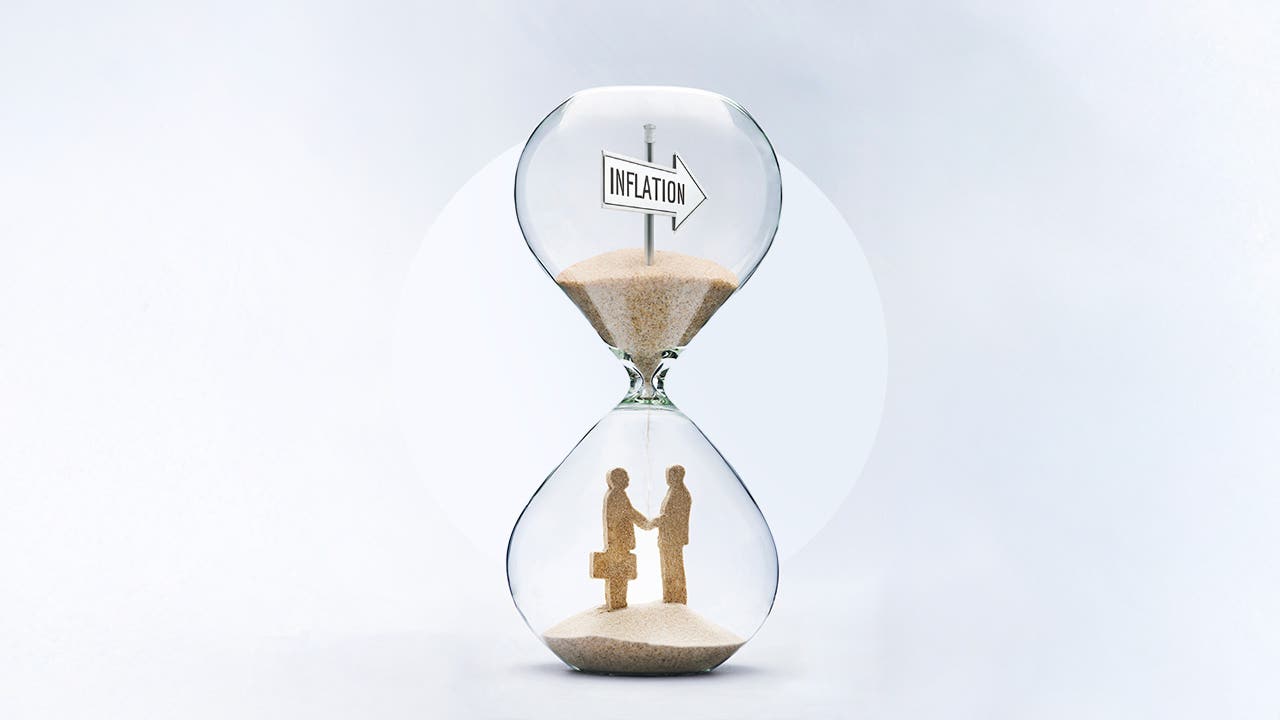
Photos by GettyImages; Illustration by Jessa Lizama/Bankrate
For many buyers, not less than a part of their portfolio is allotted to bonds, and for a superb cause. Bonds present revenue and stability, sometimes carry much less danger than shares, and add steadiness and diversification to portfolios.
Whereas this diversification profit is essential, it’s necessary for buyers to grasp how exterior elements, particularly inflation, affect bond costs and total portfolio efficiency.
What’s a bond, and the way does it work?
Earlier than leaping into how inflation impacts bonds, it helps to first perceive how bonds work.
Bonds are an settlement between an investor and a bond issuer — sometimes, an organization or authorities — that works like a mortgage. The investor lends an organization or authorities cash by buying a bond. The issuer pays the investor curiosity over a particular time period, then repays the principal when the time period ends.
There are two most important kinds of bond curiosity funds.
- Fastened charge: The rate of interest is about when the bond is listed and stays fixed all through the bond’s life.
- Floating charge: The curiosity cost will increase or decreases relying on present rates of interest.
How inflation impacts bonds
When inflation rises, rates of interest often observe because the Federal Reserve tightens financial coverage to manage the rise in costs throughout the economic system. Inflation and the upper rates of interest that observe impression bonds in a number of methods.
Inflation erodes bond returns
As a result of bonds are sometimes long-term investments, excessive or cussed inflation erodes the worth of future bond funds that buyers obtain and the principal obtained upon the bond’s maturity.
Right here’s an instance. Say you purchase a 10-year bond for $1,000 that has a 5 p.c mounted rate of interest. The Fed targets a 2 p.c inflation charge for a wholesome economic system, and inflation was three and 4 occasions that by way of a lot of 2022 and 2023.
Over the ten years you maintain that bond, inflation will fluctuate and will outpace your curiosity funds and the $1,000 you get again could have much less buying energy than a decade in the past. Even a decrease charge of inflation, reminiscent of the present 2.9 p.c, can reduce into your returns on a long-term bond.
Alternatively, some bonds can truly be a hedge towards inflation as a result of their rates of interest rise and fall with inflation. These embody:
- Bonds with floating charges.
- TIPS, or Treasury inflation-protected securities from the U.S. authorities.
- Collection I bonds, a Treasury bond that paid a record-breaking 9.62 p.c curiosity in 2022 when inflation spiked.
Inflation makes bond costs fall
Inflation can drive bond costs decrease. It is because rising rates of interest make present bonds much less engaging to buyers than new bonds issued at larger charges. In different phrases, buyers are much less seemingly to purchase older bonds that yield much less. They’re extra seemingly to purchase new bonds with higher yields. The reverse occurs when the Fed cuts charges and inflation begins to say no.
Consider it like shopping for a used automotive. Say you go to purchase a automotive made in 2022 that’s $30,000 and will get 20 mpg. That automotive turns into much less priceless, although, if there’s a 2024 mannequin for a similar value that will get 40 mpg.
This mirrors how bonds work. When new bonds pay larger rates of interest as a result of inflation is up, older bonds that pay much less begin to look much less engaging.
Learn how to put money into bonds when inflation is an element
Understanding the connection between bonds and inflation might help you steadiness your portfolio when inflation is cussed or excessive and put together for future shifts in inflation.
- Give attention to shorter-duration bonds: Brief-term bonds are much less delicate to rate of interest adjustments than long-term bonds.
- Take into account TIPS or floating-rate bonds: TIPS and floating-rate bonds function a safety towards inflation by adjusting their rate of interest based mostly on inflation.
- Diversify throughout totally different bond varieties: One of the best ways to guard your bond investments from inflation is to diversify your bond holdings throughout differing types and maturities. For instance, proudly owning authorities bonds, company bonds and municipal bonds all with totally different maturities.
- Purchase a bond fund: Investing in a bond fund provides prompt diversification, extra liquidity than proudly owning particular person bonds, skilled administration and a decrease minimal funding. There are lots of various kinds of bond funds designed to fulfill totally different targets, reminiscent of investing for retirement, short-term returns or larger yields.
Backside line
Understanding how inflation impacts bonds might help you higher allocate your property inside your portfolio and maximize your returns. You may construct a bond portfolio that hedges towards inflation by diversifying your investments and holding various kinds of bonds with totally different maturities. A bond fund will mechanically handle these elements for you.
Editorial Disclaimer: All buyers are suggested to conduct their very own impartial analysis into funding methods earlier than investing choice. As well as, buyers are suggested that previous funding product efficiency is not any assure of future value appreciation.





